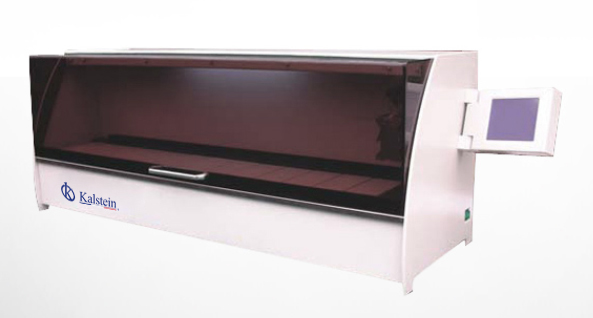Tissue Inclusion Systems (TIS) have proven to be a significant advancement for medicine, especially in the field of Anatomic Pathology. These tools are designed to assist pathologists in the process of sorting, diagnosing and labeling specimens, thus avoiding human errors and simplifying processes in an efficient manner. One of the main benefits of TIS is the reduction in the time of installation and analysis of samples, which allows a better flow of information and greater access to knowledge.
In Kalstein we are MANUFACTURERS of tissue inclusion systems for anatomic pathology laboratories, specialized for all those clinical centers that need to work with patients requiring special studies in a reduced time and that wish to carry out controlled medical processes. We also have a wide range of high technology and quality equipment for sale, with the best PRICES in the market. If you are interested in purchasing a tissue inclusion system, you can find them through our catalog HERE.
Increased efficiency and productivity
One of the main benefits that TIS can bring to the area of Anatomic Pathology is the increase in efficiency and productivity in terms of sample analysis. This is possible thanks to the implementation of automated systems and computerized tools for tissue analysis. These tools allow the rapid and proper identification of microscopic patterns, which means a decrease in set-up times and more accurate results.
At the same time, SISTs allow the pathologist greater communication with colleagues and better specimen typing. In addition, they also allow the generation of clearer and more concise reports, which facilitates clinical decision making. Tissue Inclusion Systems offer a number of benefits for pathologists in terms of Anatomic Pathology.
Diagnostic safety and accuracy
A second benefit that SISTs can bring to the field of Anatomic Pathology is improved diagnostic safety and accuracy. Systems sacrifice the human need for errors and impersonations, thanks to the accurate analysis and classification of the information collected. This means that pathologists can be confident that the results obtained are valid and reliable.
In addition, SISTs also allow for an increasing incorporation of the concept of “telemedicine”. This means that pathologists can access results and analyses from their computer or mobile device, both in the clinic and at home. This will ensure that results are accessible to all healthcare professionals in minimal time. These tools help improve efficiency and productivity, diagnostic safety and accuracy, as well as study quality.
Improved study quality
Finally, a third benefit that TIS can bring to the field of Anatomic Pathology is the improvement in the quality of studies. The use of these systems allows pathologists to perform comprehensive studies without sacrificing precision and accuracy. This means that pathologists have the opportunity to perform thorough, complete and accurate investigations to obtain reliable results. In addition, it also means greater access to information about tissue conditions.
Ultimately, SISTs offer pathologists multiple benefits in terms of work efficiency, safety and quality. This allows healthcare professionals to have tools that facilitate their involvement in pathology examinations, allowing for greater certainty in diagnoses and results. As a whole, the use of TIS is contributing enormously to the clinical practice of Anatomic Pathology.

